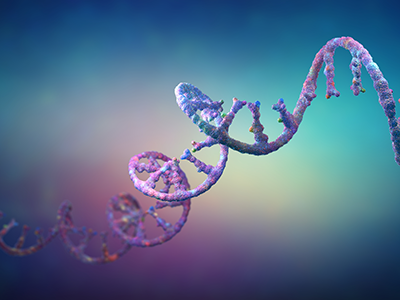New deep learning system helps scientists edit RNA

The Children’s National team built DeepCas13 on a newer and less studied CRISPR platform, called CRISPR-Cas13d, which instead focuses on RNA.
Children’s National Hospital scientists have created a revolutionary machine-learning system that predicts the effects of changing ribonucleic acid (RNA) molecules using a gene-editing tool built on CRISPR technology.
Called DeepCas13, the system is among the world’s first deep-learning frameworks to recognize the challenges of editing RNA – and then applying data science and machine learning to solve the intricate problems that stem from modifying biological code. Details of the DeepCas13 system were published recently in Nature Communications.
Born from an international collaboration, DeepCas13 could provide the backbone for treatments for diseases based on errors in RNA, including debilitating neurodegenerative diseases such as Huntington’s disease and muscular dystrophy.
“I am an optimistic person, so I expect to have treatments within five to 10 years,” said Wei Li, Ph.D., principal investigator at the Center for Genetic Medicine Research at Children’s National. “Of course, there are going to be lots of obstacles. If we have a very good system, like DeepCas13, with very good performance that can generate treatments, the next problem is how we deliver the system to the right tissue in the patients.”
The big picture
Most research in this space has focused on a version of CRISPR – or Clustered Regularly Interspaced Short Palindromic Repeats – that edits DNA, called CRISPR-Cas9. The Children’s National team built DeepCas13 on a newer and less studied CRISPR platform, called CRISPR-Cas13d, which instead focuses on RNA. In doing so, researchers are opening the door to treating a host of disorders of RNA, given its biological role in coding, decoding, regulating and supporting gene expression.
DeepCas13 combines hundreds of thousands of data points with considerable computing power to help scientists target errant pieces of RNA, while minimizing any off-target changes that could damage the health of cells.
“We only want to target the RNA molecule that is causing diseases, and we don’t want the system to edit normal RNA,” said Xiaolong Cheng, Ph.D., a member of the Li lab and the first author of the study. “With DeepCas13, we can design highly efficient, and highly specific, rules.”
What’s ahead
The FDA has approved one method for delivering RNA treatments to cells, using a virus known as AAV or adeno-associated virus. So far, the gene therapy method has had limited applications. But Li and other researchers see the potential for life-changing treatments in the coming years, built on DeepCas13 and other advances.
The system was developed with partners from around the world, including the University of Illinois Urbana-Champaign and Northeastern University in Shenyang, China. It is open source and available for free to researchers looking for targets to treat RNA-related diseases.
Li says this international partnership is leading the way: “We tested our DeepCas13 model over other methods, and we confirmed that our method has the highest prediction accuracy.”
DeepCas13 was funded by grants from NIH and the Children’s National Research Institute.







